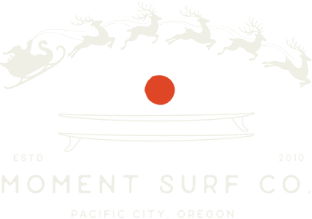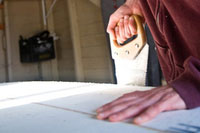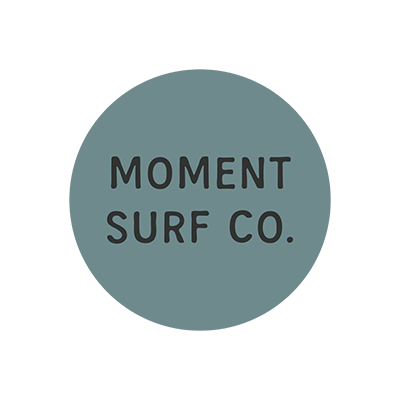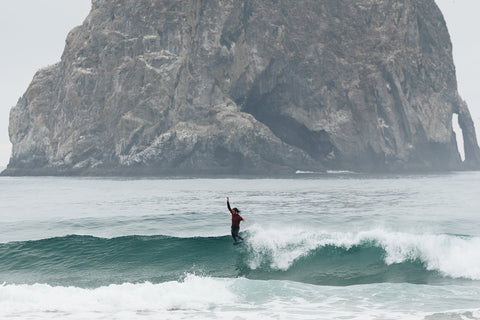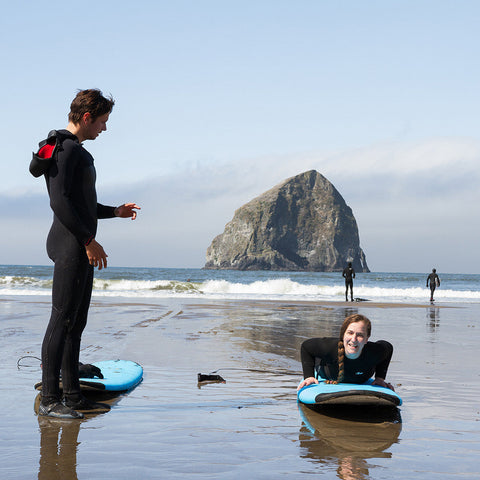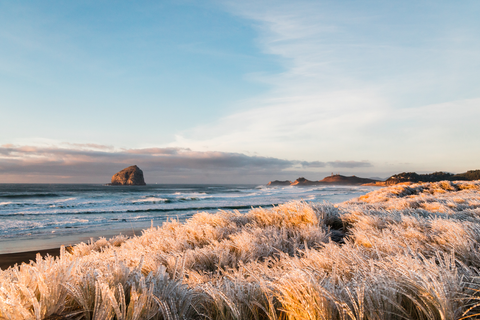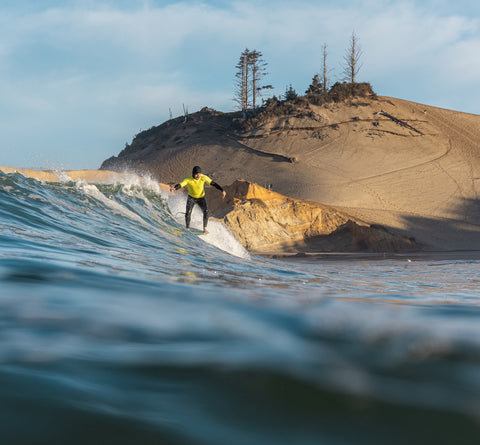At about this time last year, I began working on my first personally shaped surfboard. It was a surprise birthday gift to my girlfriend. She mentioned that she might want a board, and even told me some ideas of the shape she wanted (Thinner rails and a wider tail than a standard longboard... and not tooooo long.)
I decided that it would be fun to make it myself, so I bought the blank and took it to a friend's backyard shaping shed. With his guidance, the first day included drawing the outline of the board and cutting it out with a saw. I decided on an 8'9", at about 23 inches wide if I remember correctly.
It was probably right about this time that my girlfriend mentioned that she felt like, if I was maybe going to give her a board, that I should get it from my friend Dave Allee who shapes boards through his company in California, Almond Surfboards and Designs. She wasn't so sure about my ability to shape a usable, decent looking board. That was a completely valid concern, but it was too late for me to turn back at that point. Plus I wanted the challenge. I talked to Dave for some tips, though, to give myself the best chance possible.
After cutting the outline, I started the actual shaping. It felt good to get into a rhythm... walking up and down the board with the planer and sandpaper as the shape started to take form.


To be honest, the rails (especially the tail) ended up way thinner than expected. There's no way to add foam back, though, so I went with it. Other than concerns over the knifey rails, I was happy with the shape. It ended up being kind of a mix between a longboard and a displacement hull shape (which are the two boards that I have). It's interesting to see how those boards influenced my view of what I wanted the board to be.

After buying resin and fiberglass, I had the board glassed by a friend. I decided that it was best to have an experienced glasser work on that part. After the time I put into it at that point, it would have been a shame to make a drastic mistake at the end.
Once it was done, it was exciting to actually give her the board. Luckily she loved it. I've ridden it myself several times now, and it works great for me too. It would be awesome to make another one for myself, but I'm pretty sure there's no way I would get the same shape if I tried.
The experience gave me a greater respect towards shapers, and a sense of accomplishment for learning a little bit about the artistic process that they spend time on every day.


